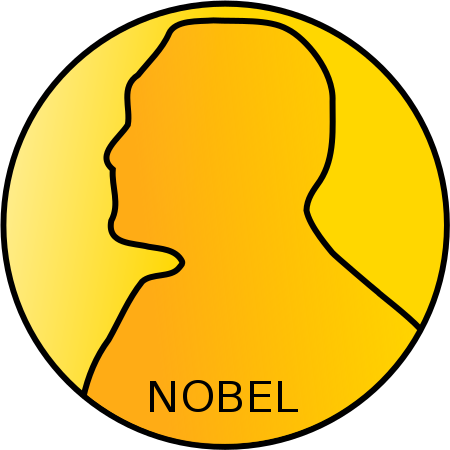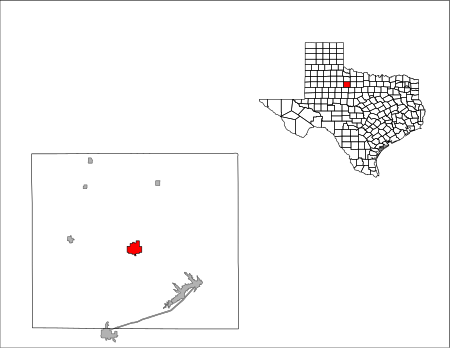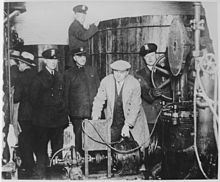Federal drug policy of the United States
|
Read other articles:

2012 single by Katy Perry Wide AwakeSingle by Katy Perryfrom the album Teenage Dream: The Complete Confection ReleasedMay 22, 2012Recorded2012StudioNightBird (West Hollywood, California)GenreDance-popLength3:41LabelCapitolSongwriter(s) Katy Perry Lukasz Gottwald Max Martin Henry Walter Bonnie McKee Producer(s) Dr. Luke Cirkut Katy Perry singles chronology Part of Me (2012) Wide Awake (2012) Roar (2013) Music videoWide Awake on YouTube Wide Awake is a song by American singer Katy Perry from Teena…

Irish-Welsh cyclist Matt BrammeierBrammeier at the 2015 Scheldeprijs.Personal informationFull nameMatthew Martin BrammeierBorn (1985-06-07) 7 June 1985 (age 38)Liverpool, EnglandTeam informationCurrent teamRetiredDisciplinesRoadTrackRoleRider (retired)CoachProfessional teams2006DFL-Cyclingnews-Litespeed2007–2008Profel Ziegler Continental Team2009–2010An Post–Sean Kelly2011HTC–Highroad2012Omega Pharma–Quick-Step[1]2013Champion System2014Synergy Baku[2]2015…
2020年夏季奥林匹克运动会波兰代表團波兰国旗IOC編碼POLNOC波蘭奧林匹克委員會網站olimpijski.pl(英文)(波兰文)2020年夏季奥林匹克运动会(東京)2021年7月23日至8月8日(受2019冠状病毒病疫情影响推迟,但仍保留原定名称)運動員206參賽項目24个大项旗手开幕式:帕维尔·科热尼奥夫斯基(游泳)和马娅·沃什乔夫斯卡(自行车)[1]闭幕式:卡罗利娜·纳亚(皮划艇)[2…

Part of a series on theOlympic water polorecords and statistics Topics Overall statistics men women Champions men women Team appearances men women Player appearances men women Medalists men women Top goalscorers men women Goalkeepers men women Flag bearers and oath takers Venues Teams Men's teams Australia Belgium Brazil Canada Croatia Egypt France Germany Great Britain Greece Hungary Italy Japan Kazakhstan Montenegro Netherlands Romania Russia Serbia Serbia and Montenegro Soviet Union Spain Swe…

Not to be confused with Annapolis, Maryland. This article includes a list of general references, but it lacks sufficient corresponding inline citations. Please help to improve this article by introducing more precise citations. (March 2013) (Learn how and when to remove this message) Municipality in Central-West, BrazilAnápolis, GoiásMunicipalityMunicípio de AnápolisMunicipality of AnápolisView of Ipiranga Environmental Park (Parque Estacionamento Ipiranga) FlagCoat of armsNickname: Ma…

Artikel ini bukan mengenai Yio Chu Kang atau Phua Chu Kang. Nama Inggris: Choa Chu Kang Tionghoa: 蔡厝港 (Pinyin: Càicuògǎng) Melayu: Choa Chu Kang Tamil: சுவா சூ காங் Pandangan luar dari wilayah Choa Chu Kang, dengan latar depan Stasiun MRT/LRT Choa Chu Kang, Singapura dan Terminal Pergantian Bus Choa Chu Kang. Choa Chu Kang adalah tempat di Singapura, terletak di bagian barat. Wilayah ini merupakan bagian dari Choa Chu Kang New Town. Fasilitas Pusat perbelanjaan Lejel…

1969 film by Burt Kennedy This article needs additional citations for verification. Please help improve this article by adding citations to reliable sources. Unsourced material may be challenged and removed.Find sources: The Good Guys and the Bad Guys – news · newspapers · books · scholar · JSTOR (February 2016) (Learn how and when to remove this message) The Good Guys and the Bad GuysFilm posterDirected byBurt KennedyWritten byRonald M. CohenDennis Shrya…

Provision of the US Constitution The Foreign Emoluments Clause is a provision in Article I, Section 9, Clause 8 of the United States Constitution,[1] that prohibits the federal government from granting titles of nobility, and restricts members of the federal government from receiving gifts, emoluments, offices or titles from foreign states and monarchies without the consent of the United States Congress. Also known as the Titles of Nobility Clause, it was designed to shield the federal o…

Questa voce sull'argomento medici olandesi è solo un abbozzo. Contribuisci a migliorarla secondo le convenzioni di Wikipedia. Christiaan Eijkman Premio Nobel per la medicina 1929 Christiaan Eijkman (Nijkerk, 11 agosto 1858 – Utrecht, 5 novembre 1930) è stato un medico e patologo olandese, Premio Nobel per la medicina nel 1929, assieme Frederick Gowland Hopkins. Indice 1 Biografia 2 Riconoscimenti 3 Altri progetti 4 Collegamenti esterni Biografia Studiò all'Università di Berlino, a…

World War II-era German attack on Denmark German invasion of DenmarkPart of Operation Weserübung Clockwise from top left: German Panzer in Åbenrå German barricade at Østerbrogade Junkers Ju 52 transport aircraft over Denmark Weapons and helmets of the disarmed Danish soldiers Danish position on the southern outskirts of Åbenrå Danish motorcycle patrols in Åbenrå Date9 April 1940 (6 hours)LocationDenmarkResult German victoryTerritorialchanges Germany occupies Denmark. To prevent German ex…

Artikel ini perlu dikembangkan agar dapat memenuhi kriteria sebagai entri Wikipedia.Bantulah untuk mengembangkan artikel ini. Jika tidak dikembangkan, artikel ini akan dihapus. Ujung OppaLahirHwang Woo Joong19 Juli 1985 (umur 38)Seoul, Korea SelatanPekerjaanPenyanyiSuami/istriKania PermatasariKarier musikGenreDangdut Ricky Ujung (lahir 19 Juli 1985) adalah Penyanyi Dangdut dari Korea Selatan. Namanya menjadi populer semenjak Ia merilis single lagu berjudul ‘Mama Papa’. Ia juga menciptak…

City in Texas, United StatesHaskell, TexasCityDowntown HaskellLocation of Haskell, TexasCoordinates: 33°9′37″N 99°44′4″W / 33.16028°N 99.73444°W / 33.16028; -99.73444CountryUnited StatesStateTexasCountyHaskellArea[1] • Total3.60 sq mi (9.32 km2) • Land3.60 sq mi (9.32 km2) • Water0.00 sq mi (0.00 km2)Elevation1,581 ft (482 m)Population (2020) • T…

Electrical wiring standard Electrical installations Wiring practice by region or country North American practice United Kingdom practice Regulation of electrical installations BS 7671 UK wiring regulations IEC 60364 IEC international standard Canadian Electrical Code (CE Code) U.S. National Electrical Code (NEC) Cabling and accessories AC power plugs and sockets Cable tray Electrical conduit Mineral-insulated copper-clad cable Multiway switching Steel wire armoured cable Ring main unit Ring circ…

يفتقر محتوى هذه المقالة إلى الاستشهاد بمصادر. فضلاً، ساهم في تطوير هذه المقالة من خلال إضافة مصادر موثوق بها. أي معلومات غير موثقة يمكن التشكيك بها وإزالتها. (ديسمبر 2018) هذه المقالة يتيمة إذ تصل إليها مقالات أخرى قليلة جدًا. فضلًا، ساعد بإضافة وصلة إليها في مقالات متعلقة بها. (…

قرين أبو البول الموقع قطر إحداثيات 24°56′46″N 51°11′04″E / 24.946111111111°N 51.184444444444°E / 24.946111111111; 51.184444444444 الارتفاع 103 متر تعديل مصدري - تعديل قُرَيْن أَبُو اَلْبَوْل هي أعلى نقطة في قطر، بارتفاع 103 متر (338 قدم)، تقع جنوب شبه الجزيرة بالقرب من الحدود مع المملك…

Kashgar قەشقەر 喀什County-level city喀什市 · قەشقەر شەھرىA minaret in Kashgar close to Id Kah mosqueNegaraTiongkokRegionXinjiangPrefectureKashgarLuas • Total555 km2 (214 sq mi)Ketinggian1.270 m (4,170 ft)Populasi (2010) • Total400.225 • Kepadatan720/km2 (1,900/sq mi)Zona waktuGMT+6[1]Postal code844000Kode area telepon0998Situs webhttp://www.xjks.gov.cn/ Kashgar merupakan kota yang terletak di Re…

Village in Wisconsin, United States Village in Wisconsin, United StatesPleasant Prairie, WisconsinVillageLocation of Pleasant Prairie in Kenosha County, WisconsinCoordinates: 42°32′20″N 87°52′13″W / 42.53889°N 87.87028°W / 42.53889; -87.87028Country United StatesState WisconsinCountyKenoshaArea[2] • Total33.69 sq mi (87.25 km2) • Land33.38 sq mi (86.45 km2) • Water0.31 sq&…

American family music group The Hughes FamilyBackground informationAlso known asThe Hughes BrothersOriginTaylorsville, UtahGenresCountry musicMembers Marty Hughes Jason Hughes Adam Hughes Ryan Hughes Andy Hughes Websitehttps://hughesentertainmentinc.com/ The Hughes Family is an American family music group. The group was originally formed by brothers Marty, Jason, Adam, Ryan, and Andy Hughes, sons of Lena and Gary Hughes, while growing up in Taylorsville, Utah.[1] The brothers moved to Br…

Rugby teamNew ZealandUnionNew Zealand Rugby UnionCoach(es)Captain(s)Most caps(-)Top scorer(-) Team kit Change kit World CupBest resultChampions 1999, 2001, 2002, 2004, 2007 The New Zealand Under 19's rugby team was a team for players aged under 19 as a platform to the All Blacks. The New Zealand Under 19's have joined forces with the New Zealand Under 21s to make the new team New Zealand Under 20s for the all new IRB Junior World Championship, which commenced in 2008. History New Zealand Under 1…

Sequence of major events in a virus pandemic Part of a series on theCOVID-19 pandemicScientifically accurate atomic model of the external structure of SARS-CoV-2. Each ball is an atom. COVID-19 (disease) SARS-CoV-2 (virus) Cases Deaths Timeline 2019 2020 January responses February responses March responses April responses May responses June responses July responses August responses September responses October responses November responses December responses 2021 January responses February respons…

